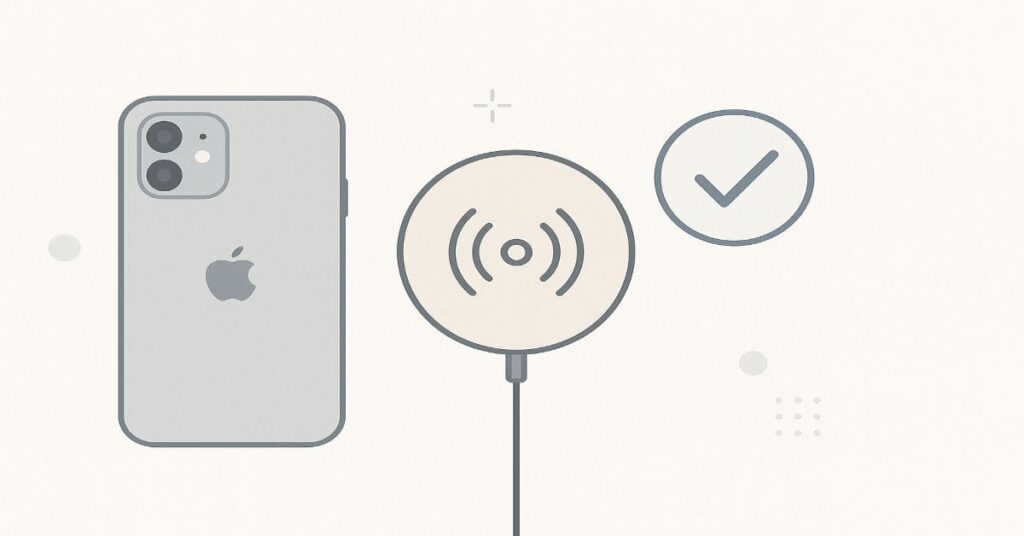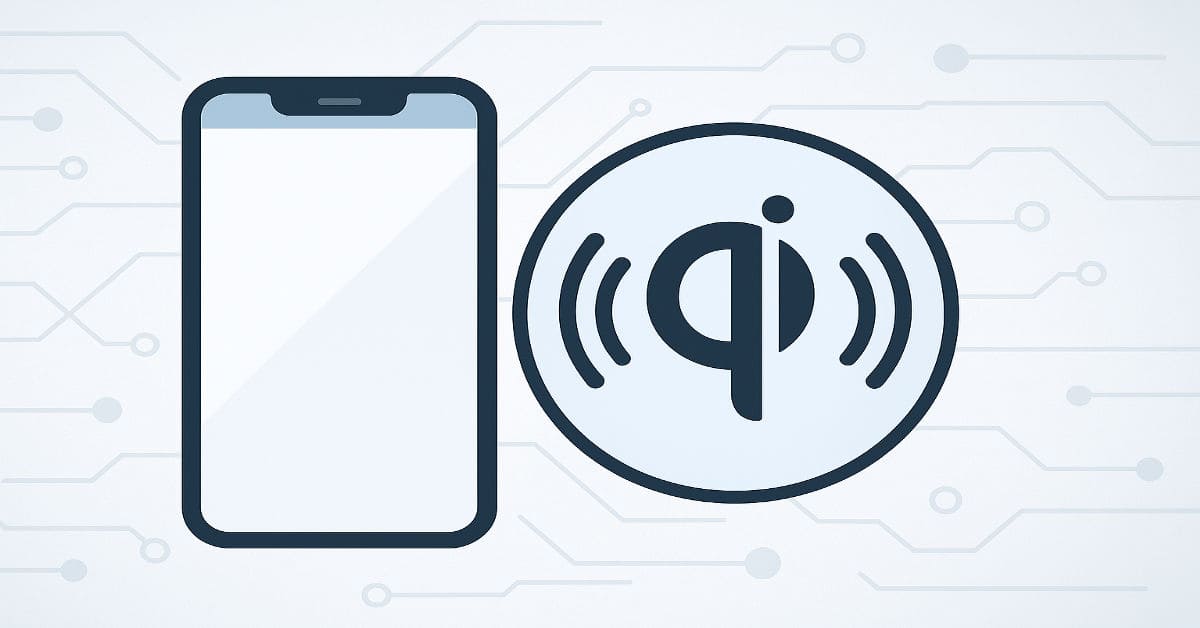Introduction
Wireless charging ne humari zindagi ko kaafi aasan bana diya hai. Bas apna phone charging pad par rakh dein, aur bijli automatically charge ho jaye—koi tangled cables ya ports ka tension nahi! Lekin har phone Qi-compatible nahi hota, isliye ye samajhna zaroori hai ke aapka device wireless charging support karta hai ya nahi. Agar aap soch rahe hain, “how do I know if my phone is Qi enabled?”, to ye post aapke liye hai. Hum aapko batayenge Qi wireless charging kya hai, iske faide, aur kaise aap easily apne phone ki Qi compatibility check kar sakte hain.
Table of Contents
What Does Qi-Enabled Mean?
Definition of Qi Wireless Charging
Qi (pronounced “chee”) is the universally adopted standard for wireless power transfer. Instead of plugging in a cable, you place your phone on a charging pad, and it powers up through electromagnetic induction.
How It Works (Simple Breakdown)
Think of it like this: the charging pad has coils that create an energy field. Your Qi-enabled phone has matching coils that pick up this energy and turn it into power for your battery: no tangled cords, no worn-out charging ports.
Benefits of Qi-Enabled Phones
- Convenience: Drop your phone on a pad—done.
- Less wear & tear: No constant plugging/unplugging.
- Universal compatibility: Most Qi chargers work across brands.
- Future-ready: More public spaces (cafes, airports, cars) are adding Qi chargers.
How to Check if Your iPhone is Qi-Enabled

How can I tell if my phone is Qi-enabled? Here’s a simple guide to find out.
iPhone Models That Support Qi
If you have an iPhone 8 or newer, your device already supports Qi wireless charging. This includes all iPhone 8, 8 Plus, X, XR, XS, 11, 12, 13, 14, and 15 models.
MagSafe Adds Extra Convenience
Starting from the iPhone 12 series, Apple introduced MagSafe, which is essentially an upgraded version of Qi. MagSafe adds magnets for perfect alignment and faster charging, but still works with any Qi charger.
Check Apple’s Official Specs
The easiest way is to visit Apple’s official iPhone specifications page and look under Wireless Charging. If Qi is listed, you’re good to go.
Quick Practical Test
If you want to be sure, place your iPhone on any Qi wireless charger. If charging starts automatically, your phone is Qi-enabled. Just remember to remove any thick cases that might block wireless charging.
How to Check if an Android Phone is Qi-Enabled
Wondering how do I know if my phone is Qi enabled? Don’t worry—it’s easier than it sounds. Here’s a practical guide:
1. Consider the phone’s age and model
Most flagship Android phones from 2017 onward come with Qi wireless charging. If you have a recent Samsung, Google Pixel, or OnePlus device, there’s a good chance it’s Qi-enabled.
2. Check the manufacturer’s website or manual
Your phone’s official website or the user manual usually lists wireless charging support under specifications. This is the most reliable method if you want certainty.
3. Use third-party apps
Apps like CPU-Z or AIDA64 can help identify your phone’s hardware features, including wireless charging capability. Just install the app and check the battery or hardware section.
4. Quick test with a Qi charger
If you have access to a Qi wireless charger, place your phone on it. If it starts charging, congratulations—you have Qi! If not, your device likely doesn’t support it.
These simple steps make it easy to figure out whether your phone supports Qi charging without any guesswork.
Other Ways to Confirm Qi Compatibility
If you’re still unsure how do I know if my phone is Qi enabled, there are a few more practical ways to check:
- Look for the Qi logo – To indicate compatibility, the official Qi logo is often found on phone packaging and within user manuals. It’s a quick visual confirmation that your device supports wireless charging.
- Check with retailer or carrier support – Sometimes product listings don’t mention Qi explicitly. Calling your phone retailer or carrier support can give you a definite answer, especially for older models.
- Search the Wireless Power Consortium (WPC) database – The WPC maintains a list of all Qi-certified devices. Simply enter your phone model, and if it’s listed, you’re good to go.
These methods are reliable, easy, and save you from the guesswork, ensuring your phone can safely handle wireless charging.
What If Your Phone Is not Qi-Enabled?
Not all phones come with built-in Qi wireless charging, but do not worry—you still have options to enjoy the convenience.
Alternatives:
- Wireless charging cases or adapters: These attach to your phone and make it compatible with Qi charging. They are easy to use and can transform older phones into wireless-friendly devices.
- Magnetic charging pads: Some pads work with special magnetic adapters or cases, allowing you to charge without plugging in every time.
Limitations of retrofitted wireless charging:
- Charging might be slower compared to built-in Qi-enabled phones.
- Extra bulk from adapters or cases can affect portability.
- Not all accessories are universally compatible, so double-check before buying.
If you are unsure, ask yourself, “How do I know if my phone is Qi enabled?” If it is not, a quality adapter or case is the easiest way to join the wireless charging world.
Common Misconceptions
Wireless charging sounds simple, but there are a few myths that can trip people up. Let us clear them out.
1. Not all wireless charging pads work with all phones
Just because a pad is wireless does not mean it is universal. Some phones require specific coil alignments or power output levels. Always check your phone’s compatibility before buying a charger.
2. Qi vs proprietary wireless charging technologies
Qi is the most common wireless standard, but some brands like Samsung or Apple sometimes use proprietary tweaks for faster charging. Using a non-compatible charger may work, but it could charge more slowly or inefficiently.
3. Qi charging is generally slower than wired charging
Even the fastest Qi charger cannot usually match a wired fast charger. For everyday top-ups, it is fine, but if you need a quick boost, a cable still wins.
Keep a wired charger handy for emergencies, and use wireless charging for convenience and overnight charging.
Conclusion
Qi is a global wireless-charging standard that frees you from cables, reduces wear on ports, and offers greater compatibility. Key points: iPhone 8 and later models generally support Qi; for Android, checking the manufacturer’s specifications or doing a simple Qi-pad test is the easiest way. If the phone does not have built-in support, a wireless receiver or case is a simple solution. Check your model now and try a Qi pad/adapter — if you need help, comment or subscribe.
FAQs
How do I make my phone Qi-enabled?
If it is not built-in, use a wireless charging receiver/adapter (a thin coil that plugs into the phone’s port) or a wireless-charging case. With one of these, place the phone on a Qi pad to charge.
Are all phones Qi-enabled?
No. Many recent flagship phones support Qi, but older and some budget models do not.
Is my iPhone a Qi-enabled device?
Yes — iPhone 8 and later support Qi wireless charging. Older iPhones do not. Quick test: put your iPhone on a Qi charger; if it starts charging, it is Qi-enabled (remove thick cases first).
What is the Qi symbol on my phone?
A small “Qi” mark or a wave-style icon (often on the box or in the manual) means the device is Qi-certified.
Discover more from Snap Charge Hub
Subscribe to get the latest posts sent to your email.
